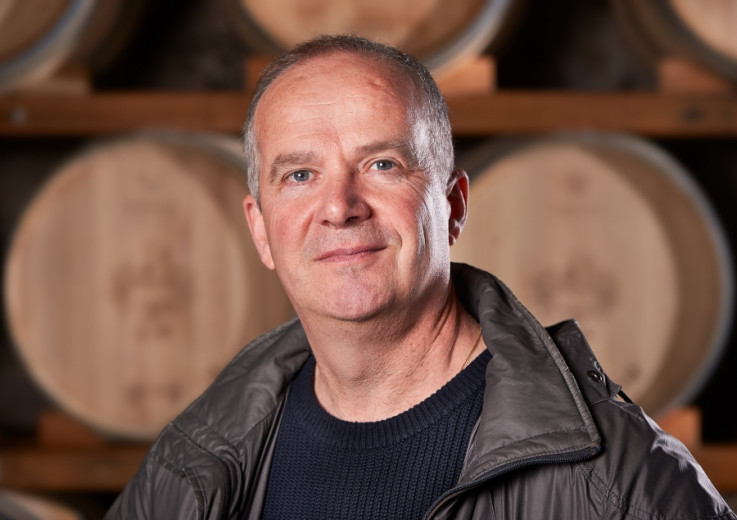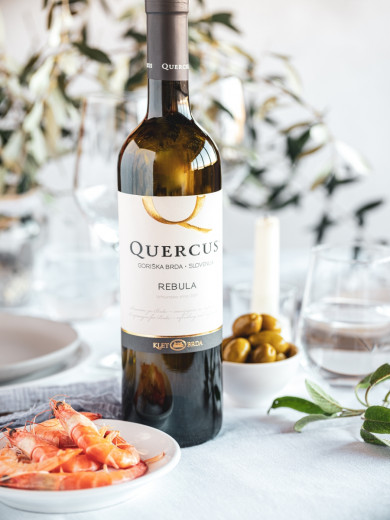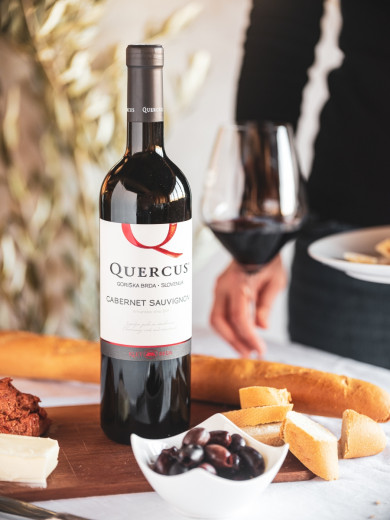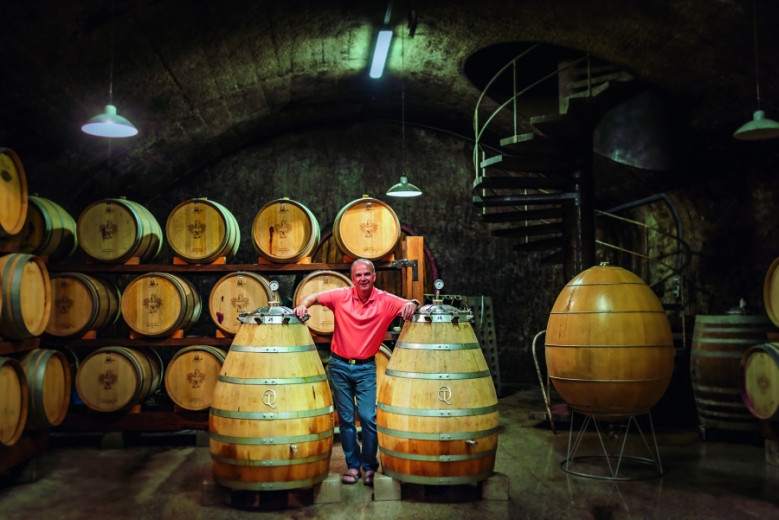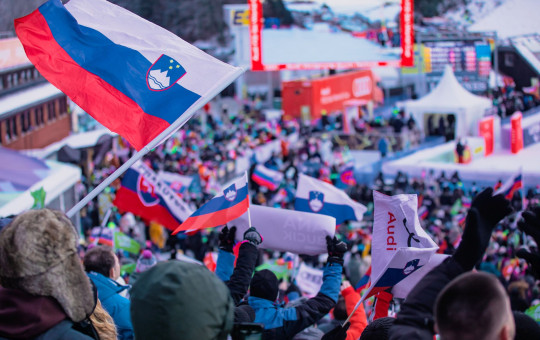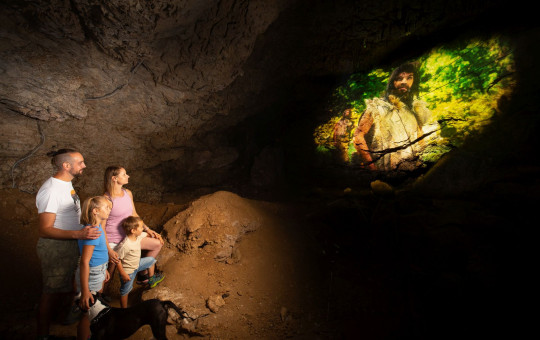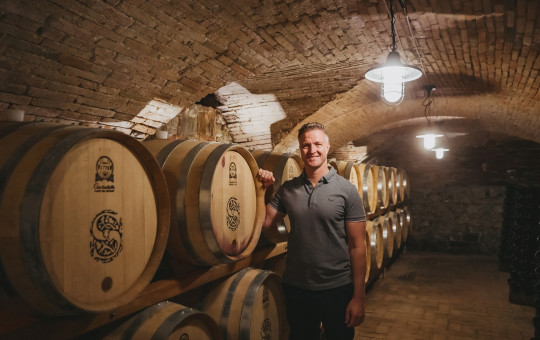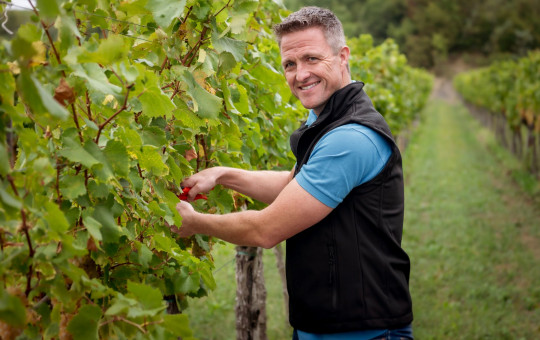Date: 6. November 2020
Time to read: 5 min
Slovenia is a small country, but at the same time a very diverse one. This is also true of Slovenian wines and winemakers, which is why there is a broad range of wines available in the country. We spoke about this with Darinko Ribolica, the main oenologist at the Klet Brda winery.
Slovenians are very proud of the wines they produce. What inspires you the most as an expert in domestic wines?
In Slovenia, we have everything from wines produced in a warm, Mediterranean climate to those produced in an entirely continental one. I can say that wines from the Primorska region are full of sun and the proximity of the sea can be felt, which is why these usually have a higher alcohol content. Their aromas resemble southern aromas, i.e. tropical fruit and overripe fruit, such as peaches or apricots. If we go deeper into the centre of Slovenia, to the Dolenjska region where the climate is more continental, the wines have more freshness and their fruity aromas are much more European, with apples, pears and cherries prevailing. If we go closer to the Štajerska region, the acidity level goes up a bit and the aromas are even more pronounced due to the bigger temperature difference between day and night. On the nose, these wines are always very expressive, with notes of green fruits – peppers, green chillies, elderberries, green apples. You can feel this freshness in the taste and also the aftertaste, which is usually based on a higher acidity level. This is why wines from Štajerska are generally more fragrant, more acidic, but with a thinner body. The wines from Primorska, which includes wines from Goriška Brda, are more corpulent, richer, more structured, full.
The Klet Brda winery has been loyal to its story for years, and the Quercus brand itself, which has been on the market for 20 years, is solid proof of that. Where do you think the reasons for this success lie? What are the highlights of the story, so far?
The Quercus brand was first presented to the Slovenian market two decades ago, but we quickly started considering exporting and we wanted a brand that would represent Goriška Brda in all its diversity. As such, there are 11 different wines in the Quercus brand. The story of the brand is one about young, fresh wines, which are the most sought after in the West. All white wines from this brand, Rebula, Sauvignonasse, Pinot Bianco and Pinot Grigio, Chardonnay and Moscatto-Verduzzo, are fermented in stainless steel tanks which means there is no contact with wood. They have fresh, fruity and extremely pure notes, as are typical of specific varieties of wine. These wines enter the market within one or two years of being produced and are also drunk in this sort of period. The key highlights of this story are that we were able to produce very popular wines that people buy when looking for freshness, fruitiness, elegance, something very drinkable. No “weird” smells that would demand explanations or indicate a different oenological approach, but truly wines that resemble the grapes of the varieties they were made of.
Despite its large size, the Klet Brda winery are is extremely flexible. How do you adapt to market demands?
The Klet Brda winery functions and operates as a small winery, even though it is very big, owned by 400 wine-making families from Goriška Brda. Everything, of course, starts in the vineyard. We have two agronomists that monitor and advise farmers on how to cut and how much to burden the vines, where to plant individual varieties and so on. They also take samples for monitoring the maturing of grapes, and this is how we determine the optimal time for harvesting. The whole harvest is planned in detail.
What is my role in this?
I work closely with our agronomists, since the quality of the wine starts in the vineyard. Several times per year, and almost every day before the harvest, I go to the vineyards with them. After the harvest, my role is to monitor and order quick processing and the manner of fermentation of the grape – either in stainless steel tanks or wooden barrels – to determine which yeast is the best for individual varieties and later to monitor the fermentation of all wines.
In the wine cellar, we have thousands of containers that are tested at least once daily during the fermentation, which is how we monitor the process of fermentation. My work also entails the constant monitoring of quality, preparation of varieties, preparation of basic lines. The work is very diverse and no two days are the same, since not even one harvest is the same as another. It is varied, demanding and creative work.
What is more important for the production of wine: following your own story or the demands of the market?
Both are important – you need to follow your own story, but you absolutely need to follow the market’s demands as well. I think this depends very much on the size of the wine cellar. If you are a small producer, you can build everything from your own story, but every such proprietary wine demands very detailed explanations on why it is proprietary. In the Klet Brda winery, we have two such stories that are unique and special. The story of Motnik and of wines De Baguer, both are based on new ideas. The rest of our wines are actually produced following global market demands. If you want to export and be successful on the international market, you need to sell wines that give consumers what they want. In Goriška Brda, the natural potential is so big that we are able to achieve such a high quality, one that is also widely recognised. So, you can follow your own story or you can follow market demands. However, if you are a big producer, most of your wines must follow market demands because otherwise you cannot sell the wine.
How important is it to tell the story behind the wine to the consumer?
It’s very important, since every consumer wants to be impressed and wants to know why they should buy a certain wine and what is special about it. Quality is another aspect that is very important, but it must be based on other things, too, and they must be intertwined in the story. In Goriška Brda, this is the story of farmers that work, learn, listen to all our wishes, are ready to spend long days in the vineyard for the grapes and do everything necessary to offer the fruit to the sun and prepare it for the production of excellent wine. Therefore, the whole story, connected to the tradition of the wine cellar and individual producers, presents the wine in a better light and adds value to it.

